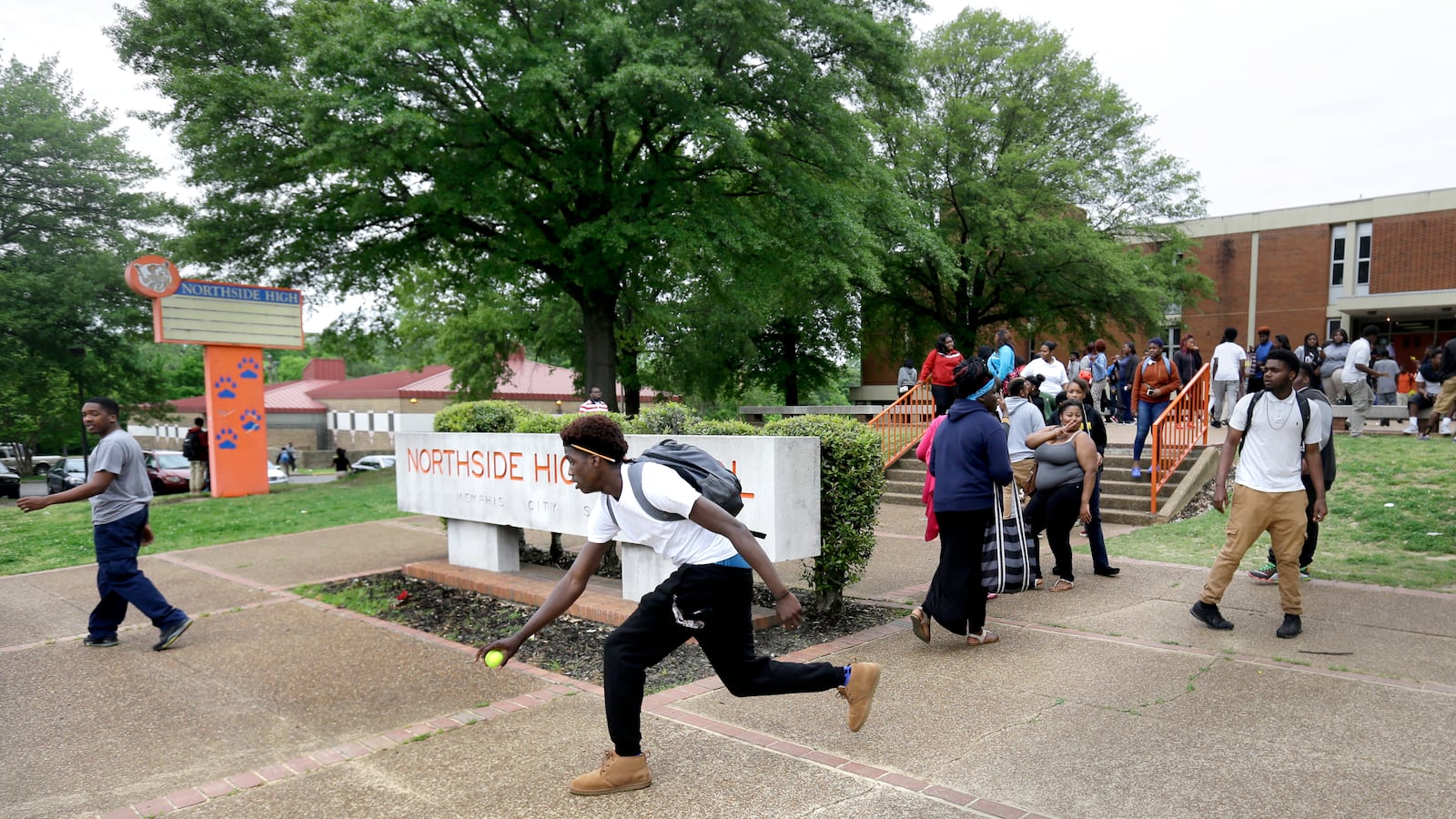While Memphis school leaders say academics should be the main driver behind closing schools as they seek to “right-size” the district in the next five years, a Chalkbeat analysis shows shrinking student enrollment has been a primary factor in shuttering 20 since 2012, two thirds of which had been on the state’s list of lowest-performing schools.
Shelby County Schools’ most recently closed school, for instance, had only 190 students last school year for a facility built for 1,128 students. Less than a decade earlier, Northside High School had more students than space — an enrollment that was six times this year’s final head count.
The vast majority of Memphis schools shuttered in recent years had 300 students or less during their final school year at an average of 44 percent of building capacity, compared with 91 percent across the district. (The chart at the bottom of this page tracks years of dwindling enrollment.)
The steady enrollment declines have meant that less than 5,000 students across Shelby County have been directly impacted by a school closing since 2012, a relatively low number out of a school system that educates some 100,000 students each year.
As Shelby County Schools prepares to release a report that will help guide conversation on closing up to 24 more schools in the next five years, Chalkbeat is examining three major criteria that has driven past closures. Those include poor academic performance, under-enrollment, and the cost of operating schools and maintaining aging buildings.
"It’s just like a business. You get money from the state per number of students. When the numbers don’t add up, that’s a problem."
Melvin Burgess
Superintendent Dorsey Hopson wants to tip the school closure equation toward academics — the same reform mindset used in New York City and Chicago in the last 15 years in shuttering hundreds of low-performing schools. But Hopson defaulted to the “kitchen sink” approach when talking with reporters last month about tough decisions facing some of the city’s historic schools.
“If you’ve got a school where the achievement is low, where the utilization is low, where there is very high deferred maintenance, then those schools obviously will be up for consideration (for closure),” Hopson said before a community meeting about the future of East High School.
Shelby County Schools says it needs to close more schools. Here are 25 that are at risk.
Enrollment is tied to both funding and academics. Sufficient numbers of students are critical to generating funds and providing the scale for services needed to lift achievement. The fewer the students, the less state money allocated to the district.
“It’s just like a business,” said Melvin Burgess, chairman of the Shelby County Board of Commissioners, the local funding agent for Shelby County Schools. “You get money from the state per number of students. When the numbers don’t add up, that’s a problem. When schools lack staff or resources, you’re cheating the kids.”
Shelby County’s enrollment challenges stem from decades of population decline and migration from many black and impoverished neighborhoods in Memphis. Public schools have usually been the last to leave, said school board Chairman Chris Caldwell.
“We’re not the canary in the coal mine,” Caldwell said. “We’re the last miner out.”
Most closures have been in the South Memphis/Whitehaven area, with some in North Memphis — consistent with trends showing higher rates of population decline in those zip codes than the city as a whole, according to John Zeanah, deputy director of the newly formed Memphis and Shelby County Division of Planning and Development.
For more than a year, Shelby County Schools has been analyzing its bloated facilities footprint to determine how best to shrink the district. That report is scheduled for release this fall but will not include recommendations. District leaders also are working with city planners who are developing Memphis’ first strategic plan since 1981, a blueprint to guide the city’s growth during the next 25 years.
Memphians seem to want a more intentional approach, including thinking twice before closing historic neighborhood schools that the district may need again.
“(What happens if) the population in the neighborhood changes, as so many Memphis neighborhoods are?” asked Alvin Payne, a 1972 alum of Carver High School, closed this year after 59 years of serving Memphis’ Riverview neighborhood. “Is our school system collaborating with city planners or the housing authority? Are we closing schools in places where we’ll need another school in 10 years? I think that’s exactly what we’re doing in south Memphis.”
Here is the breakdown on enrollment of schools closed since 2012, including during the school years leading up to closure:
Reporter Laura Faith Kebede also contributed to this report.

